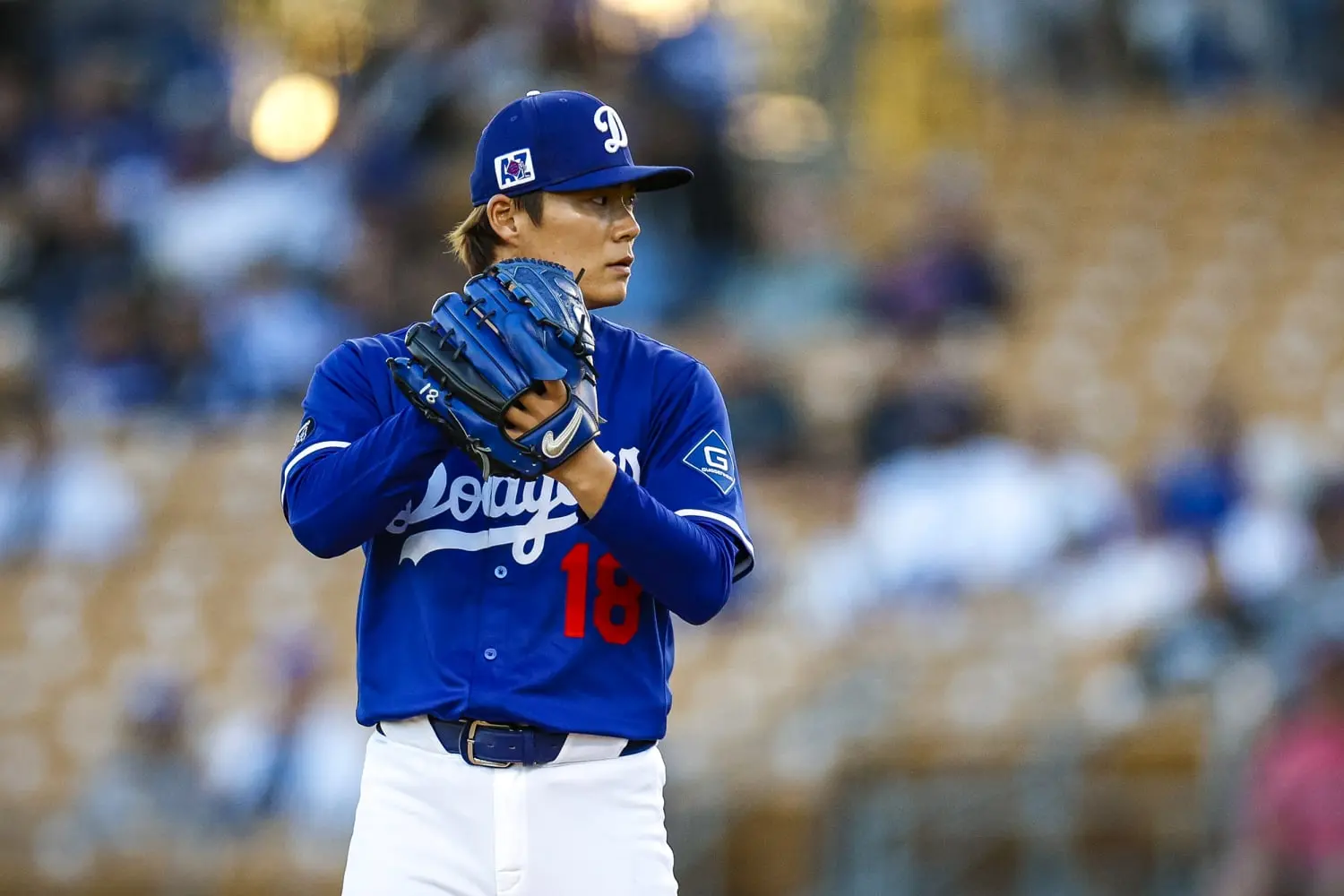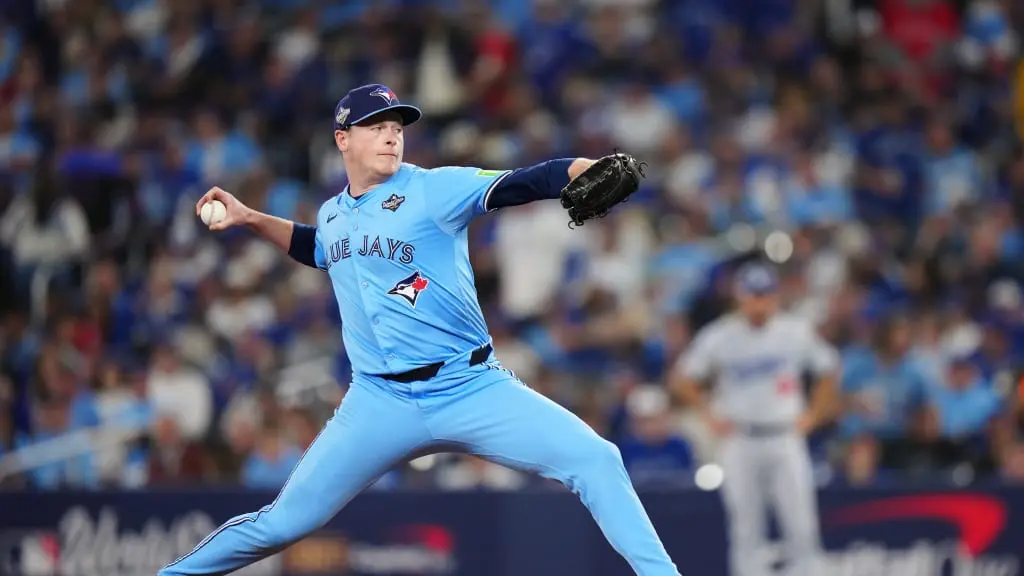“THEY CHEATED — AND I CAN PROVE IT!” Those were the explosive words that thundered through every sports headline after Blue Jays head coach John Schneider erupted in fury following Game 7. His accusation wasn’t vague — it was direct, detailed, and aimed squarely at Yoshinobu Yamamoto.

According to Schneider, the Japanese ace had allegedly used hidden high-tech devices to enhance his four-seam fastball, the very pitch that struck Bo Bichette and sent him collapsing to the ground. “It wasn’t natural movement,” Schneider said. “You can’t fake physics — unless there’s something helping you.”
Reporters initially thought the coach’s anger was just the heat of defeat, but when he presented his evidence — a series of slowed-down videos, ball-tracking anomalies, and even sensor interference readings — the story took a shocking turn. The dugout turned into chaos as officials scrambled to respond.
Fans at the stadium were stunned. Within minutes, social media exploded with hashtags like #YamamotoGate and #BaseballScandal trending worldwide. Clips comparing Yamamoto’s pitches from earlier games showed irregular spin rates and break angles that defied explanation.
“I’ve never seen a ball move like that,” one former MLB pitcher tweeted. “If this is true, it’s the biggest cheating scandal since the Astros.” Commentators echoed similar sentiments, calling it “a dark moment for baseball” and demanding accountability from the league.
Yamamoto’s camp, however, quickly fired back. His agent released a statement calling Schneider’s claims “baseless and defamatory,” arguing that the pitcher’s spin rate had always been consistent with his natural mechanics. “This is pure frustration from a losing team,” the statement read.
But Schneider wasn’t backing down. At the post-game press conference, he slammed a folder full of documents onto the podium. “We found traces of electromagnetic interference near the mound,” he said. “We have data. We have proof. MLB cannot ignore this.”

The room erupted with questions. Reporters shouted over each other, demanding specifics. Schneider remained calm but defiant. “This is bigger than one game,” he said. “This is about integrity — about whether fans can still believe in what they see on the field.”
By midnight, Major League Baseball had officially confirmed it was “reviewing the matter.” Investigators were dispatched to inspect the mound, Yamamoto’s equipment, and even the baseballs used during the game. Cameras caught workers collecting evidence under tight security.
Outside the stadium, fans chanted and argued. Some demanded justice for the Blue Jays, while others defended Yamamoto as a victim of jealousy and xenophobia. The tension escalated until police had to separate groups outside the players’ tunnel.
Meanwhile, analytics experts across the country began dissecting every pitch. Independent breakdowns revealed that Yamamoto’s fastball had registered a 32% increase in vertical break compared to his season average. Statisticians called it “physically improbable without outside influence.”
The next morning, ESPN dedicated an entire segment to the controversy. Former players debated furiously on live television. “If Schneider’s right,” said one analyst, “this could shake baseball to its core. Technology-aided pitching is a new kind of cheating we’ve never faced before.”
As MLB’s investigation progressed, whispers began to circulate — that a small transmitter might have been found in one of Yamamoto’s gloves. Officials refused to confirm, but insiders hinted that “anomalous electronic readings” had indeed been detected. The scandal deepened.
Yamamoto himself finally broke his silence. At a hastily arranged press conference, he appeared pale but composed. “I have never cheated,” he said firmly. “My work, my reputation, my life — they all depend on honesty. I welcome any investigation.” His voice cracked slightly as he spoke.
Back in Toronto, Schneider doubled down once more. “We’re not accusing without reason,” he said. “We’re protecting the game we love.” He revealed that Bichette, who had been hospitalized briefly, was recovering but remained shaken. “He deserves to know the truth about what hit him.”
The league’s official conclusion came 72 hours later — a statement that divided the sports world. MLB declared that no conclusive evidence of deliberate cheating was found but admitted that “unusual data patterns” warranted “further technological regulation.”

That phrasing — vague, cautious, and bureaucratic — set the world on fire. Fans flooded comment sections calling it a cover-up. “No conclusive evidence? Then why the anomalies?” one viral post read. Even veteran reporters accused MLB of protecting its international star for commercial reasons.
In Japan, media outlets rushed to defend Yamamoto, portraying him as the target of unfair Western scrutiny. Headlines like “A Hero Wrongly Accused” dominated sports pages. The incident triggered a wave of nationalism and anger from fans who saw the scandal as an attack on their pride.
Meanwhile, in North America, conspiracy theories flourished. Some claimed that MLB had destroyed the transmitter evidence. Others speculated that new tech-assisted pitching methods were quietly being tested across teams under “research programs.” The entire sport felt tainted.
As days passed, both sides remained entrenched. Schneider refused to apologize, and Yamamoto continued to deny wrongdoing. “History will remember this,” Schneider told reporters. “One day, the truth will come out — and when it does, it won’t just shake baseball. It’ll redefine it.”
Despite the chaos, one fact remained clear: Game 7 of the series would never be remembered for the score, the hits, or the trophy. It would forever be remembered as the night trust in baseball cracked — the night fans started asking whether technology had finally stolen the soul of the game.






